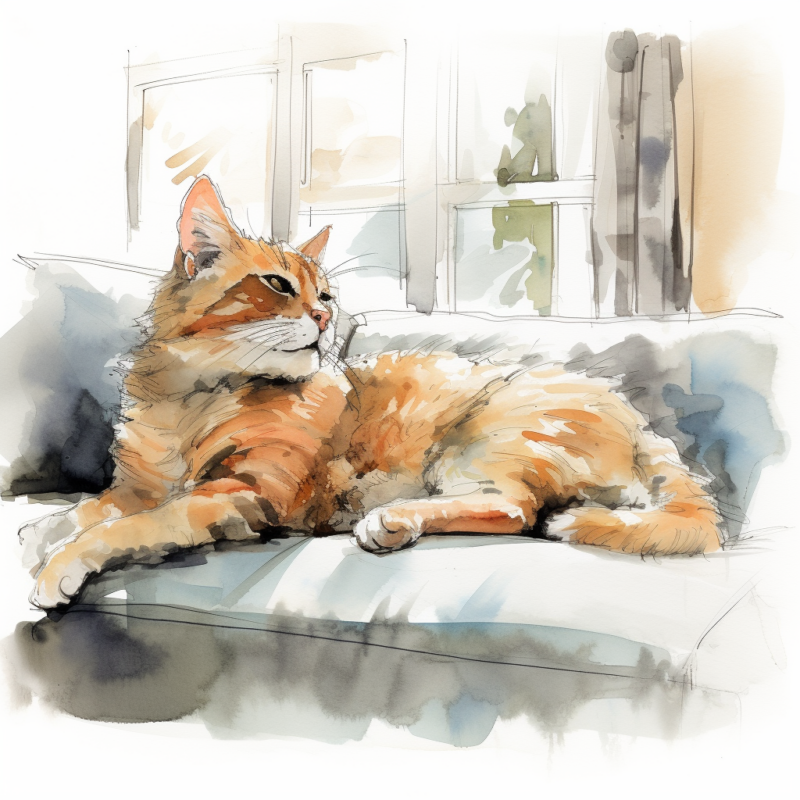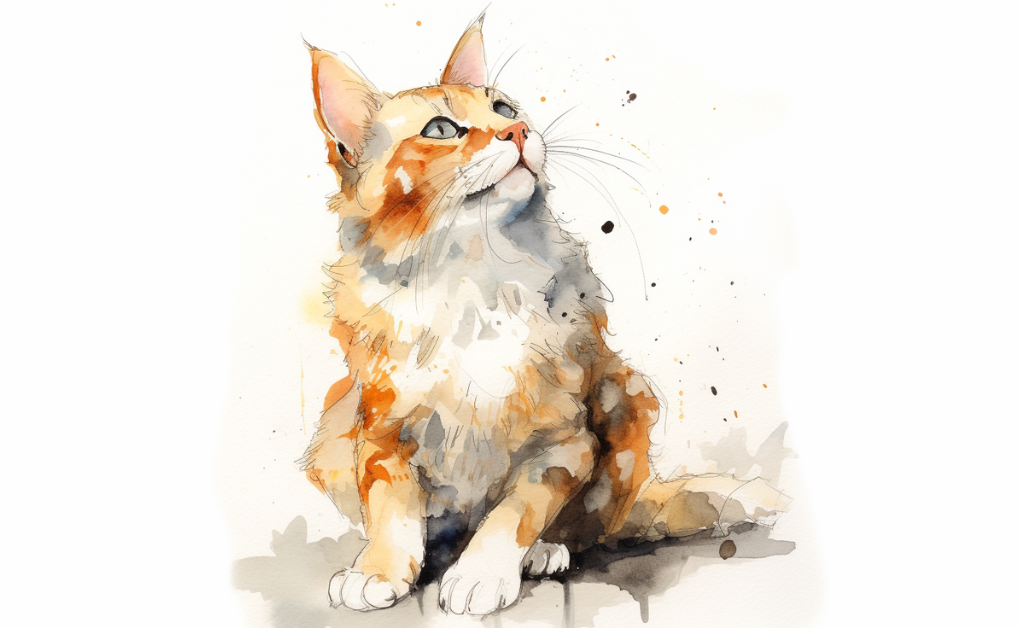What are Flea Allergies in Cats?
What is it?
How is it Treated?
Breed Predispositions
Any cat breed can develop flea allergies, as the allergic reaction is caused by the cat’s immune system reacting to the flea’s saliva.
Introduction
It wasn’t until she noticed her normally energetic Sphynx cat, Cleo, incessantly scratching and developing small, red bumps on her skin that Amanda realized something was amiss. Worried about her feline companion’s well-being, she quickly scheduled an appointment with the veterinarian for a comprehensive examination. After a thorough assessment, the vet determined that Cleo was suffering from flea allergies, a common condition that affects many cats.
Flea Allergy Dermatitis (FAD) in cats is a health condition triggered by an overreaction of the cat’s immune system to allergens present in flea saliva. Not all cats bitten by fleas will develop FAD; this condition is only prevalent among cats hypersensitive or allergic to flea saliva. This hypersensitivity is a byproduct of a complex immune response within the cat’s body. While flea eggs and larvae may be present in the environment, flea feces contribute significantly to the allergic reaction.
FAD is one of the most widespread skin allergies seen in cats, affecting up to 90% of cats and 50% of dogs, and it can affect cats of any age, breed, or sex. A cat with flea allergies may have a severe reaction, indicating the seriousness of this issue to cat health.
Causes of Flea Allergies in Cats
Flea Allergy Dermatitis (FAD) is the most common skin disease in domestic cats, primarily triggered by an extreme sensitivity to flea saliva. Let’s explore this in more detail:
Flea Bites
Flea bite allergy is the direct cause of FAD. It’s not just a flea’s blood meal that impacts the cat, but the saliva it injects into the cat’s skin that ignites an allergic reaction. Each bite from adult fleas can intensify this allergic response, with the severity linked to the number of bites and the frequency of exposure. It’s crucial to note that adult fleas often cause the most discomfort to cats.

Flea Saliva
Flea saliva, or flea dirt, contains approximately 15 different allergenic components or antigens. When a flea bites, this saliva is inserted into the cat’s skin. Cats that are allergic to this saliva end up with a condition known as flea-allergic dermatitis (FAD). The reaction can be intense, leading to severe itching, hair loss, redness, and inflammation, even from a single bite.
Environment
The cat’s environment can significantly influence the risk of flea allergies. Cats residing in regions with a warm and humid climate, favorable for fleas’ year-round proliferation, are at a higher risk of developing flea allergies. Also, cats that have access to the outdoors or live in households with multiple pets that go outside are more susceptible due to increased exposure to fleas.
Inadequate Flea Control
Cats without regular and effective flea preventative measures are more susceptible to developing flea allergies. Regular flea treatments are critical for all cats, including indoor cats, as fleas can still find their way inside. If flea treatments are skipped or incorrectly applied, the chances of a flea infestation and subsequent flea bite allergy amplify.
Individual Sensitivity
Like humans, certain cats are more prone to allergies. Factors such as the cat’s genetic makeup and the health of its immune system influence this. For instance, a cat with a hyperactive immune system will likely develop an allergic response to flea saliva. Previous exposure to allergens can also heighten a cat’s sensitivity as the immune system can react more aggressively over time with repeated exposure.
Bear in mind; indoor cats aren’t safe from fleas. Fleas can sneak indoors on clothing, other pets, or wildlife and even leap through screens on windows or doors. Hence, maintaining year-round flea prevention measures is essential to prevent a cat flea allergy, especially if your cat shows a severe reaction, like miliary dermatitis, to flea bites.
Symptoms of Flea Allergy in Felines
- Intense itching and scratching leading to itchy skin
- Hair loss, often due to the persistent scratching
- Redness and inflammation of the skin
- Development of sores and hot spots
- Changes in behavior due to discomfort
- Lesions and open sores
It’s crucial to remember that while these symptoms can suggest a cat with FAD, they can signal other skin or food allergy conditions. Therefore, consulting a veterinarian for an accurate diagnosis becomes imperative in the presence of these symptoms. A professional will be able to accurately identify the cause and prescribe an effective treatment to kill the flea, alleviating the cat allergies.
Diagnosis of Flea Allergy in Felines
Diagnosing food allergies in cats can be complex since it’s not an easy task, and there needs to be a straightforward diagnostic test. Here is the usual process veterinarians undertake to diagnose food allergies in cats:
Detailed Medical History and Physical Examination
The diagnosis begins with a comprehensive consultation about the cat’s dietary history. The veterinarian will question the pet owner about the cat’s clinical signs, their onset, duration, and the effect of any treatments given so far. If you are worried that your cat may have food allergies, this will be the first step in finding out. The vet will perform an in-depth physical examination to identify signs that might suggest a food allergy, such as skin inflammation, recurrent ear infections, and gastrointestinal issues.
Food Trial with a Novel Protein
Food allergies occur when a cat reacts to certain proteins in its diet. The most reliable way to diagnose food allergies is through an elimination diet trial. This involves feeding the cat a diet containing novel proteins – proteins the cat has never consumed – for a period, usually 8-12 weeks. If the symptoms subside during this period, the vet may reintroduce the original food to see if the symptoms reappear. If they do, it’s a strong indication of a food allergy.
Differential Diagnosis
This entails ruling out other conditions that could cause similar symptoms, like flea allergy dermatitis or environmental allergies. Differentiating food allergies from these conditions can be difficult to diagnose. Various tests, such as skin or blood tests, can be performed or treat the other conditions to see if symptoms resolve.
Response to a Hypoallergenic Diet
If a cat responds positively to a hypoallergenic diet—its symptoms improve—it can suggest a food allergy. However, this isn’t a definitive diagnosis. Other gastrointestinal conditions may also respond positively to dietary changes.
Consulting with a Veterinary Nutritionist
If identifying the allergy becomes too challenging, the vet may refer you to a veterinary nutritionist. They have specialized knowledge about dietary needs and pet food allergies and can provide additional insight.
Once the vet confirms the food allergy, the next step is identifying the specific allergen. This usually involves reintroducing individual ingredients from the original diet individually and observing for a return of symptoms. This process can be time-consuming but is essential for managing the condition in the long term.
Treatment for Flea Allergies in Cats
Treating flea allergies in cats involves an integrated approach that includes both prevention of flea infestations and managing the symptoms. Here’s a comprehensive explanation of the treatment alternatives:

Stringent Flea Control Measures
A critical component of managing flea allergies in cats involves rigorous flea prevention. This means using an effective flea control product consistently to keep the pet’s environment free of fleas.
This could involve flea combs, flea shampoos, and long-acting topical or oral medications, which many cats respond best to. Strict flea control is an important treatment for flea allergies, not only treating the current infestation but also preventing future ones.
Symptomatic Treatment
Secondary skin issues stemming from the cat’s allergic response must also be addressed. This could involve corticosteroids or antihistamines to control itching and inflammation. Topical creams or ointments may also soothe and protect the skin. If secondary bacterial or yeast infections have developed due to the cat scratching its skin, antibiotics or antifungal medications may also be required. It’s worth noting that cats generally tolerate steroids better than humans and dogs.
Immediate Relief Measures
Certain medications can be used to block the allergic reaction and give immediate relief to the cat. These might be oral medication or injections, depending on what the cat tolerates better.
Omega-3 Fatty Acid Supplements
Omega-3 fatty acid supplements can be beneficial in reducing inflammation and may help manage allergic skin reactions. They are often used alongside other flea allergy treatments.
Regular Check-Ups and Treatment Adjustments
Regular vet visits are important to monitor the cat’s progress, adjust the treatment plan if necessary, and manage any side effects from the medication. The effectiveness of the flea control product should be evaluated regularly, and changes should be made if necessary.
It’s critical to remember that every cat is unique, and what works perfectly for one might be less effective for another. Therefore, the treatment and prevention of flea allergies often involve a trial-and-error process until the right treatment is found. However, with patience, diligence, and regular veterinary care, cat flea allergies can be effectively managed.
How to Prevent Flea Allergy in Cats
Prevention of flea allergy dermatitis in cats largely involves keeping your cat and its environment free of fleas. Here are some strategies:
- Feeding a Balanced Diet: Feeding your cat a well-balanced diet that includes a variety of proteins can help prevent the development of food allergies. A varied diet can prevent overexposure to any protein source, reducing the risk of developing an allergy.
- Limited Ingredient Diet: A limited ingredient diet may benefit cats prone to allergies or who have already shown signs of food sensitivities. These diets contain fewer components, which can minimize the risk of exposure to potential allergens.
- Avoidance of Known Allergens: If your cat has reacted to a specific ingredient in the past, avoid foods that contain this allergen. This means you must carefully check the cat food and treats’ labels.
- Gradual Introduction of New Foods: When introducing new food to your cat’s diet, gradually over 7-10 days. This will allow you to monitor your cat for any adverse reactions.
- Regular Check-ups: Regular veterinary check-ups can help monitor your cat’s health and detect any signs of food allergies early on. If your cat begins to show symptoms of a food allergy, such as itching or gastrointestinal issues, a vet visit should be scheduled as soon as possible.
- Careful Treat Selection: Some treats can contain ingredients that cause cat allergic reactions. Always check the ingredients of any treats you give your cat, and avoid any that contain ingredients your cat is allergic to.
Remember, even indoor cats can get fleas, so it’s important to use preventative measures for all cats. With a good prevention strategy, you can significantly reduce the risk of your cat developing flea allergy dermatitis. The cat parent may be treating the cat for ticks, but not all tick prevention products work 100%, and they kill the tick differently. Always consult your veterinarian for advice tailored to your cat’s specific needs.
Frequently Asked Questions
Disclaimer: The information provided on this veterinary website is intended for general educational purposes only and should not be considered as a substitute for professional veterinary advice, diagnosis, or treatment. Always consult a licensed veterinarian for any concerns or questions regarding the health and well-being of your pet. This website does not claim to cover every possible situation or provide exhaustive knowledge on the subjects presented. The owners and contributors of this website are not responsible for any harm or loss that may result from the use or misuse of the information provided herein.







